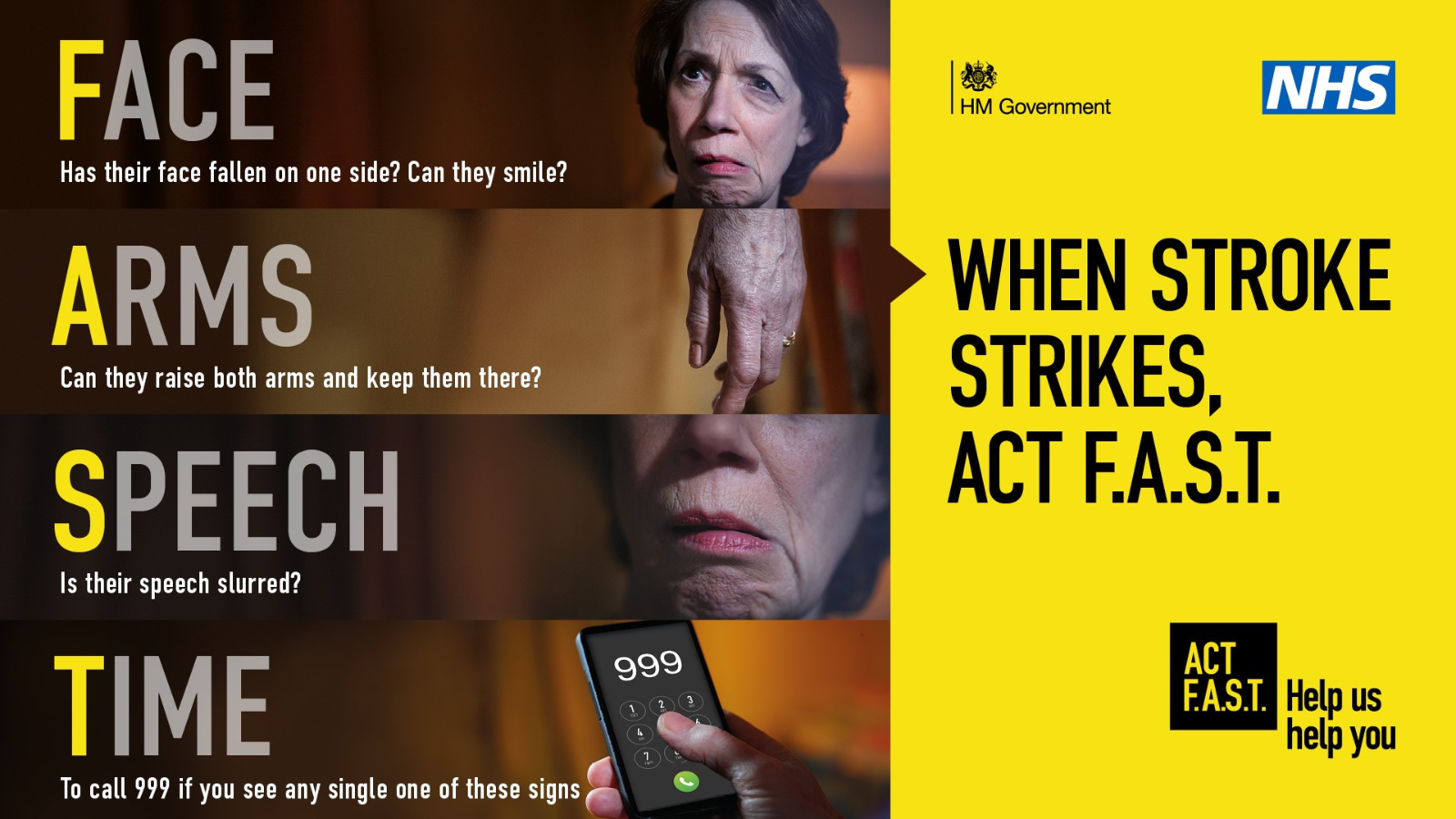Stroke Act F.A.S.T Campaign
.png)
NHS England in association with the Stroke Association have relaunched the act F.A.S.T campaign. The campaign highlights that a stroke is a medical emergency and urges the public to call 999 immediately if they notice any single one of the F.A.S.T signs in themselves or others. Stroke strikes every five minutes in the UK. It can happen to anyone, of any age, at any time. It's vital to know how to spot the signs of a stroke in yourself or someone else.
What is a Stroke?
A stroke occurs when blood supply to part of the brain is cut off, killing brain cells. Damage to the brain affects how the body works and changes and affects how the individual thinks and feels. The severity of the effects depends on where the blockage takes place in the brain and how big the area of damage is. The three main types of stroke include:
Ischaemic Stroke – this is the most common type of stroke. It is caused by a blockage cutting off blood supply to the brain.
Haemorrhagic Stroke – caused by bleeding in or around the brain.
Transient Ischaemic Stroke (TIA) – known as a mini-stroke, this is the same as a stroke but symptoms only last for a short amount of time. The blockage only stops the blood from getting to your brain temporarily.
All strokes are different, some can be minor and individuals can recover from the effects very well. Others are left with more serious problems, sometimes resulting in a loss of independence, and needing care.
Unfortunately, some strokes can be very serious and can result in a coma or sudden death, so it is very important to be able to recognise the symptoms and get medical help as soon as possible.
How to spot a Stroke
The F.A.S.T acronym provides a memorable way of identifying the most common signs of a stroke. Please click here to watch the F.A.S.T NHS video with BSL.
Face – has their face fallen on one side? Can they smile if you ask them to?
Arms – Can they raise both arms and keep them there?
Speech – is their speech slurred?
Time – Time to call 999 – remember, the quicker medical help is received the better chances are of recovery.

If you see someone with any of the signs or symptoms of a stroke, remember to Act F.A.S.T. Call 999.
BSL users can make a BSL video call to 999 at 999bsl.co.uk
Text relay users can call 18000
Text 999 by registering your phone in advance at emergencysms.co.uk
We hope that you have found this article informative and helpful. If you are looking for more information on strokes, or support on living with the effects of a stroke, please take a look at the links below.